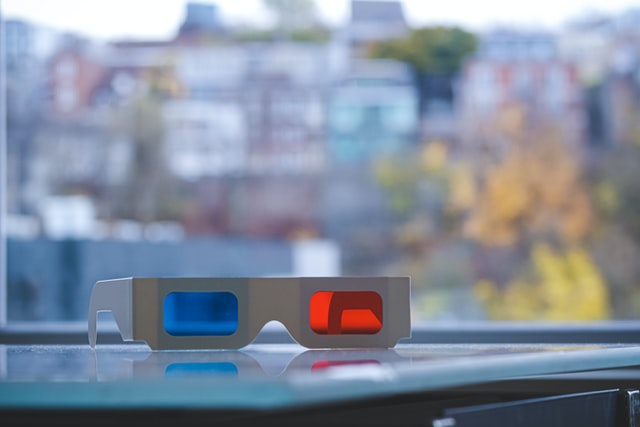Watching 3D movies in theaters is fun. For many, it is just like visiting a different world for a couple of hours. Some moviegoers would love to enjoy the same experience at home but their HDTV or LCD TV remains incapable of rendering the same results. Even so, there are still ways to realize the big-screen 3D effects even without spending too much on another TV. How do you achieve that goal? Simply by using specialized glasses that work with technology that produce stereoscopic images.
Table of Contents
What are the 3D glasses?
3D glasses are a much more complicated device than you might think. The glasses work by letting each eye see a different image, creating three-dimensional vision as the brain combines the two pictures. Each lens has a polarizing filter that allows only light with a certain polarization to pass through.
The 3D glasses can be used at home and in movies to watch movies and TV shows in 3D. They are most commonly used for watching 3D movies in theaters, but there are other types of 3D glasses that can be used at home.
What is the use of 3D glasses?
3D glasses are used to view 3D movies in the theater, and there are a few ways to get that same effect at home.If you have a 3D TV, you can watch 3D movies with 3D glasses that came with your TV. You can also get them from stores and online. If you don’t have a 3D TV and want to watch a movie that requires special glasses, you can buy clip-on lenses for your normal glasses or use colored cellophane.
How do 3D glasses work?
3D glasses create the illusion of three-dimensional images by restricting the light that reaches each eye.In modern 3D systems, this is achieved using filters that restrict light coming from various angles. Polarizing filters are often used in 3D glasses, because they allow the blocking of specific directions of linearly polarized light.
For stereoscopic projection systems, the primary use of polarizing filters is to create polarization-based optical power splitters (or “polarizing beam splitters”), which enable the left and right channels of the stereoscopic image to be projected or displayed separately.
Types of 3d Glasses
There are three main types of 3D glasses you can use at home: passive polarized, active shutter, and anaglyph. The first two types require a 3D TV and the third type can work with any TV.
- Passive Polarized Glasses
A passive polarized screen is made up of strips of glass that are oriented in such a way that each eye sees a slightly different image. Passive polarized glasses filter the light so each eye sees only the image intended for it.
- Active Shutter Glasses
An active shutter screen alternates between showing images to the left eye and right eye, in synchronization with glasses that open and close one lens at a time. This is how your PC monitors show 3D images.
Find a screen with 3d glasses
You don’t have to spend a lot of money to enjoy a 3D movie at home. Some movie theaters will give away the red/cyan glasses they use, but if you can’t get them for free, you can buy a pair online for much less than it costs to upgrade to 3D at the theater.
Make sure your 3D glasses are compatible with the brand of 3D TV that you own
- First, make sure your 3D glasses are compatible with the brand of TV that you own. If you have a Samsung TV, for example, double-check that the compatible symbol is on the box of your 3D glasses. Some brands, like Sharp, do not make 3D glasses so check ahead to avoid disappointment
- Once you’ve found your 3D glasses and made sure they are compatible with your TV, turn on both devices and locate the menu button on your remote control.
- Select the “3D” option in the menu and put on your 3D glasses. Your TV will be able to tell that you’ve put them on when it picks up an infrared signal from the battery-powered receiver in the glasses.
- Finally, sit back and enjoy your favorite 3D movie or sports program! If you’re having trouble watching a certain show or program in 3D, check to make sure that it was broadcasted in HD.
3D glasses work by revealing different images to each eye
3D glasses work by revealing different images to each eye. They use a phenomenon called stereopsis to create depth perception. The two images are initially created via separate lenses that filter the image, or are displayed on separate screens. The image is then sent to the appropriate lens to be revealed to the right eye, and blocked by the left lens.
The result is a 3-dimensional image that seems almost lifelike. 3D glasses can be used independently of a screen; however, they’re most often used in conjunction with a TV or movie screen.
Conclusion
First of all, if you already wear glasses it’s possible to use them for 3d movies. However, if your eyesight is bad enough that you have to wear contact lenses in order to see clearly, then you’ll need 3d glasses. Sometimes, you can actually even get a free pair of these with certain movies.
